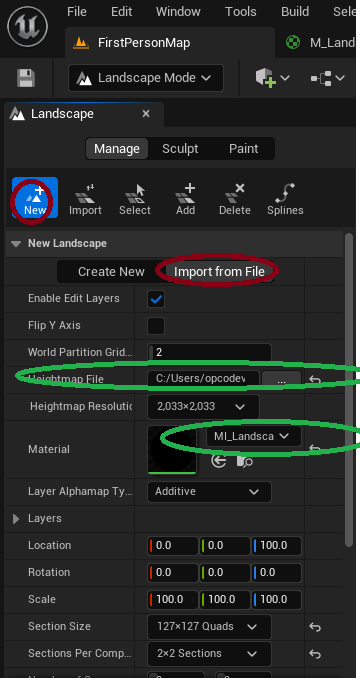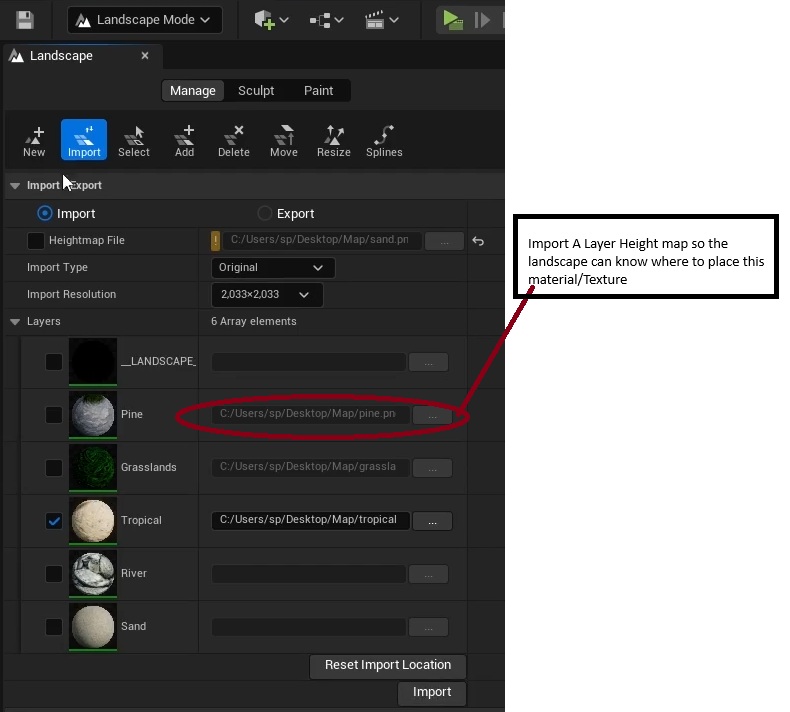Height Maps & Landscapes: Difference between revisions
No edit summary |
No edit summary |
||
| (3 intermediate revisions by the same user not shown) | |||
| Line 9: | Line 9: | ||
[[File: | [[File:Import_from_file_heightmap_with_material.png]] | ||
2. Start With Importing a Height map, and for the material | 2. Start With Importing a Height map, and for the material | ||
| Line 19: | Line 18: | ||
2.4 Select your Heightmap File | 2.4 Select your Heightmap File | ||
2.5 Select your material instance with your Landscape Layer Blend Nodes | 2.5 Select your material instance with your Landscape Layer Blend Nodes | ||
3. After the import you can assign Those material layers to other Height maps, this will automatically put that material | |||
at the position indicated in the heightmap | |||
[[File:Landscape_Layers_Height_Map.jpg]] | |||
These Layers come from your material instance Landscape layer Blend | |||
[[File:Landscape_Layers_Height_Map_with_blend.png]] | |||
Latest revision as of 22:51, 14 January 2025
Height Maps(Pictures contain height data) and landscapes have a special relation as you can import a height map, have a material instance with layers and assign each of those layers a picture(A height Map)
1. Start With a Material , Creating Layers with the node Landscape Layer Blend , and then creating a material instance
2. Start With Importing a Height map, and for the material
2.1 Go to Landscape Mode 2.2 Select New 2.3 Click Import from file 2.4 Select your Heightmap File 2.5 Select your material instance with your Landscape Layer Blend Nodes
3. After the import you can assign Those material layers to other Height maps, this will automatically put that material
at the position indicated in the heightmap
These Layers come from your material instance Landscape layer Blend



